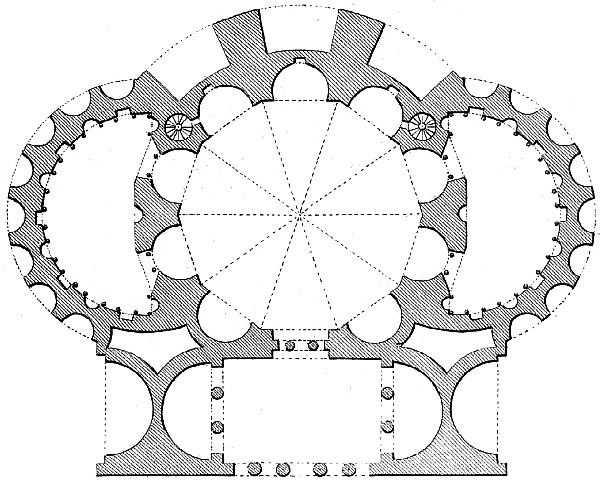"But it is in the Horti Luciliani that the mechanical architecture of Piranesi reaches an extreme level of abstraction. Here, a complex of structures in semicircles and in sectors of circles obeys the rule of gemmation, as they revolve around the Atrium Minervae: an astonishing mechanism, in which Piranesi achieves the maximum refinement of his geometric instruments."
Manfredo Tafuri, The Sphere and the Labyrinth - Avant-Gardes and Architecture from Piranesi to the 1970s, p. 36.
Tafuri could have said so much more about Piranesi's Horti Luciliani besides a superficial "analysis" of Piranesi's geometric and planimetric dexterity.
The name of the garden itself offers a first clue. There was no horti Luciliani in ancient Rome, at least none of any record. There was, however, a Horti Luculiani and a horti Liciniani, but again no horti Luciliani. In turn, Piranesi places the fictitious horti Luciliani where the horti Lucullani ought to be, and places the horti Lucullani at a location further north. (It was the horti Lucullani that Messalena murdered for.) Lucilius is the father of Roman satire. Is there anything satirical in Piranesi's plan of the garden? Perhaps the answer has something to do with a shrine to Minerva being in the center of one of the garden's building complexes--literally (the goddess of) "wisdom" but also "weaving" in the center of a garden of satire. The adjacent salons and the nearby theater thus make more sense.
The name Atrium Minerva provides a second clue. Within the ancient horti Liciniani stood a nymphaeum, then and still known as the temple of Minerva Medica. It is the plan of the Minerva Medica of the horti Liciniani that inspired Piranesi's elaborate plan of the Atrium Minerva of the horti Luciliani.
And a third clue comes with Piranesi's locating of the fictitious horti Luciliani in that part of Rome which, in Piranesi's own time, was for many grand tourists a favorite place of lodging, especially those from the British Isles. The Adams brothers and many others (including Karl Friedrich Schinkel four decades later) stayed in the neighborhood at the top of the Spanish Steps. Furthermore, soon after publication of the Ichnographia Campus Martius Piranesi moved his family and business to a building just within the southern precinct of the garden of satire.
satire 1 a : an ancient Roman commentary in verse on some prevailing vise or folly b : a usually topical literay composition holding up human or individual vices, folly, abuses, or shortcomings to censure by means of ridicule, derision, burlesque, irony, or other method sometimes with an intent to bring about c : LAMPOON 2 a : a branch of literature ridiculing vice or folly
| |

| |

clew or clue 2 a : the information or key that guides through an intricate procedure or a maze of difficulties b : the thread of narrative (as in a story) or of thought or argument c usu clue : a piece of evidence tending to lead one toward the solution of a problem : an indication that properly interpretated may lead to full understanding of something or to the discovery of something unknown or hidden
|

